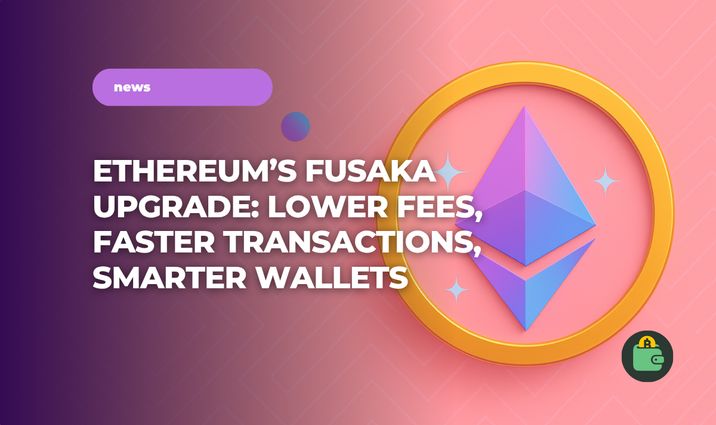Fusaka Upgrade: What Ethereum Is Preparing for the End of 2025

Ethereum keeps evolving. In the fourth quarter of 2025, the network will go through one of the most important updates of recent years — the Fusaka Upgrade. The name combines two parts of the ecosystem: Fulu (consensus layer) and Osaka (execution layer). Together they form a major upgrade that aims to fix scalability issues and make the network easier to use for millions of people.
Key Takeaways
-
Fusaka is Ethereum’s major upgrade planned for late 2025. It combines changes to both the execution and consensus layers, with PeerDAS as its core innovation.
-
The upgrade is designed to solve Ethereum’s data bottleneck, making it possible to safely scale Layer-2 networks and prepare the ground for future sharding.
-
The upgrade gives users lower fees on L2, faster transaction confirmations, more reliable network performance, and simpler wallet experiences (like logging in with FaceID instead of seed phrases).
Why a New Upgrade Is Needed
Ethereum today looks like a city with one main highway and a set of new expressways around it. These expressways are the Layer-2 networks, such as Optimism, Arbitrum, and zkSync. They carry most of the traffic, but all the data still has to end up on the main highway — Ethereum’s Layer 1. And that’s where traffic jams happen. Every L2 transaction must be confirmed and secured on L1, and the system is getting crowded.
Fusaka is designed to solve this problem. It expands the capacity of the network and introduces smarter ways to check data without forcing every node to store the entire load.
PeerDAS: The Key Innovation
The most important part of Fusaka is a technology called PeerDAS. The name may sound complex, but the idea is easy to explain. Before, every Ethereum node had to store all the data from L2 transactions. It’s like if every citizen in a city had to keep a copy of every book from every library at home. Obviously, that’s too heavy and expensive.
PeerDAS offers a new approach: each node stores only part of the library, and the network uses math to make sure all the books are still available. Nodes check random fragments, and together they prove that the entire collection is complete. Thanks to this method, Ethereum can safely increase the number of “blobs” — special containers for L2 data — inside each block. The more blobs fit into a block, the cheaper it becomes to run transactions on Layer 2. For end users, this means lower fees and faster performance.
Other Important Changes
Fusaka also brings several other improvements. The gas limit per block will rise to around sixty million, which means more transactions can be included at once and waiting times will go down. At the same time, no single transaction will be able to take up an entire block, because there is now a strict cap for each one.
The update also changes the user experience. Ethereum will get native support for the secp256r1 cryptographic curve, already used by iPhones, laptops with Secure Enclave, and login systems with WebAuthn. In practice, this means that transactions can be signed directly with hardware keys, and wallets will support a login flow people already know — for example, FaceID — without the need to remember seed phrases.
Security will improve as well. The schedule for block proposals will become fully predictable, so validators can’t manipulate it. For users, this means transactions will be included more reliably and new services can appear that guarantee inclusion in a specific block. On top of that, smaller but useful upgrades will optimize smart contract code, cut down gas costs, and fix old pricing issues in cryptographic operations.
What It Means for the Ecosystem
For everyday users, Fusaka will be most visible through cheaper L2 fees and faster confirmations. In daily life it will also be clear that wallets are easier to use and the network stays stable even during peak hours. Developers will gain new tools, like native hardware signing and cheaper bit-level operations, while validators will need to update their clients and adjust to new rules. The reward is a stronger, safer, and more transparent system.
A Step Toward Ethereum’s Future
Fusaka is more than just another update. It is preparation for the next big stage. By introducing PeerDAS and gradually raising capacity, Ethereum is laying the foundation for Danksharding — a system where data storage becomes fully distributed. In many ways, Fusaka is a rehearsal: the network is learning how to scale without giving up decentralization or security.
In the end, the Fusaka Upgrade moves Ethereum closer to its ambitious goal: to become the infrastructure layer of the internet, a platform that can serve millions of people worldwide while staying both reliable and affordable.